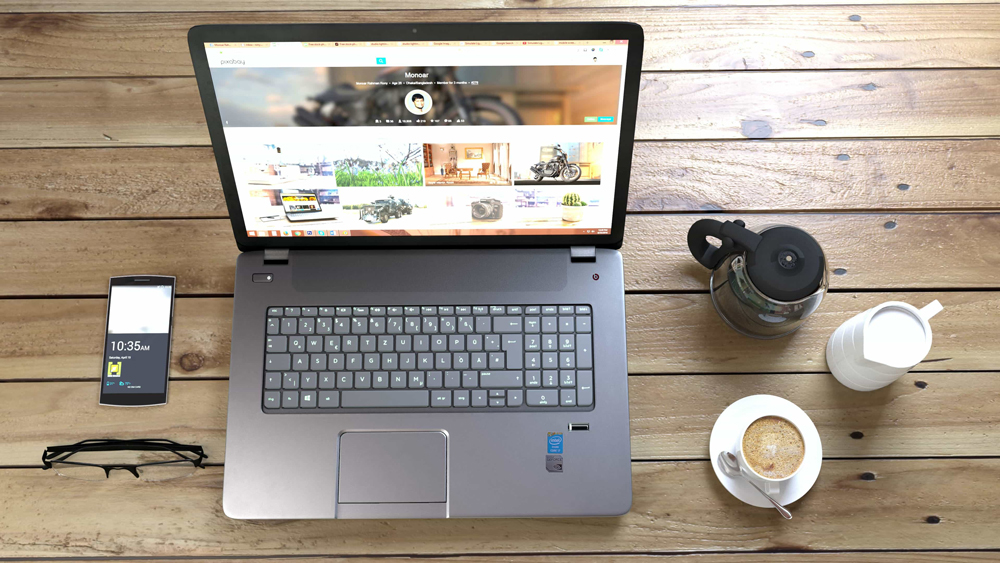A great website is a very powerful marketing tool that can enhance brand awareness and attract new visitors and paying customers, and as well help you finds various new ways of monetization.
Regardless of your niche and site purpose, you should always focus on making your website fast and performing flawlessly, pages should be aesthetically pleasing, informative, and easy to use.
This is why we share our key tips that will help you create a great website.
In this article:
What Makes a Great Website
There are a few steps that you can take to enhance the aesthetics of your site and make it useful for your audience. In the following paragraphs, you will read about handy tips and how you can stand out from the crowd.
A Beautiful Design and Pleasing Aesthetics

Although your website can be very informative and grant visitors just the right content, chances are that the first impression is created by the visuals of your pages.
This means that you should focus on presenting your site content via a clear visual structure and eye-pleasing color scheme.
As a rule of thumb, use high-quality and optimized images, don’t clutter your content, and make use of the space across your web pages – sites with too many components and cluttered text/media can be distracting for visitors and therefore force them to leave.
Read Also:
This is why, when brainstorming ideas for the overall layout, think about whether you add too many elements in a single page and also keep an eye on the white space – include some between-page sections, as it gives your pages a chance to breathe.
It is also important to tailor the design concept to the type of visitors you wish to attract. This means that you should know more about your audience, so you can craft a design concept that would please them.
For example, If you focus on selling gaming products, you should research what kind of aesthetics would please your target audience – maybe, a bright and expressive color scheme, blended with high-resolution photos of each gaming product you offer, along with neat visuals of video game characters.
In a different example, a website promoting legal services can focus on minimalistic design with smooth colors and professional photos of the legal team, along with sections giving more insight about each individual service.
State Your Website Purpose

When building a website, it is important to state why it exists and what functions it will perform. In this manner, if you want to create an e-commerce store, your priority should be selling various products, and therefore state that this website’s main purpose is to be an online store.
Although apparent, it is important to make such a statement, as it immediately informs your potential visitors what kind of content there might be across your pages and what features they can expect on your pages.
Just like the e-commerce store example, a law services website should claim a similar statement – potential visitors should immediately be aware that the website promotes legal services and once they open it, most likely they will find information about the attorneys’ fields of specialization, price plans, and areas of expertise.
Similar to the precise purpose, a website should also provide precise content information. Continue reading to find out more.
Read Also:
Provide Valuable and To-The-Point Fresh Content

In most cases, people use the Internet to search for precise answers to their queries and quickly find services and products they can benefit from.
This means that generally, people expect to find content that is precise and to the point.
High-quality content can also help you with SEO.
For example, your site visitors would expect to know almost instantly what your website is all about, what kind of products and services you promote, contact info, price lists, and working hours without any kind of unnecessary distraction and worthless information.
So, to make sure people stay on your pages and find your website useful, you should grand them all the info right away and in the most precise way possible.
To make a great website in terms of content, you should also focus on addressing your audience’s pain points and providing them with a quick solution for their needs. This means that you can include press releases, testimonials, and reviews for your services and products, all along with useful and to-the-point articles, should you decide to create a blog section.
Read also:
Create Easy-to-Use Navigation

After you come up with an appealing design and useful content, it is time to focus on the navigation of your web pages. This step is very important, as well-structured and simple-to-use site navigation can make a good website become an awesome one.
It also helps with search result rankings, as search engines give an advantage to websites with well-structured and intuitive navigation.
Your website navigation should be created in such a way that your visitors can understand and use it with ease. This will help them immediately go to their desired destination – products page, sign-up section, blog, and contacts.
To do so, include visible menus with a clear hierarchy across all your web pages, along with an informative site journey section, so they know exactly where they are at any given moment. It is also important to include context – give some more information via images and text. The easier and more informative your navigation is, the happier your visitors will be.
Also, use various types of menus such as drop-down, sandwich, and mega menus – when placed in the right places across your pages, they can greatly increase the overall browsing experience.
It is also important to include a visible and search section, so your visitors quickly find whatever they are looking for, just like including CTA buttons – once a visitor is convinced he wants to reach you or use your services/products, he should be able to do so quickly and with ease.
So include CTA buttons, but don’t overuse them – cluttering too much information can become displeasing for your audience.
Optimize Your Website for Various Devices

People likely land on your website via their smartphone or tablet. After all, such devices are used for many reasons – web browsing, entertainment, and even work.
This is why, you should invest time to optimize your website, so it looks and functions well on mobile devices. Doing so will greatly increase the user experience and trust in your brand and website.
When it comes to this kind of optimization, focus on delivering your content in the right way and keep an eye on the visual aesthetics – making it look visually pleasing can increase session times and even contribute to conversions.
Make Sure Your Website Performs Smoothly

If you want to create an awesome website, you should constantly be looking for technical issues and fix them as soon as possible.
Even a website with a great design and useful content can be avoided if it doesn’t function properly – menus are broken, web pages do not open, images are not displayed and the loading speed is slow.
This is why you should periodically be searching for such issues and try to fix them.
This is important for two main reasons:
- Such errors decrease user satisfaction and can result in low traffic and a low overall number of conversions.
- Search engines will decrease your site’s position in search results and will give an advantage to better-performing websites.
Also, along with fixing issues on your website, you should subscribe to a reliable hosting service – by doing so you make sure that your website will be performing effortlessly in any given scenario and regardless of traffic peaks and various maintenance procedures.
Focus on Providing Robust Security

Protecting your pages and visitors from malware, cyber-attacks, and viruses should be a task with great priority when working on your website.
When doing so, your site visitors will build trust in your site and brand and will be more confident when browsing and interacting with your web pages.
Knowing that a website is safe, visitors are also more confident to make a purchase via your site.
So, when it comes to online security, among other measures, you should install SSL certificates and various security plugins, should you be using a site-building platform such as WordPress.
Read also:
What Is Website Malware and How to Protect Your Site from It?
Conclusion

There are numerous factors that make a website great.
Although it all can look a bit daunting at first, it is always a good idea to spend some time and effort crafting a beautiful design, high-quality content, and a functional navigation system. This, along with focusing on security and optimization will make your website an awesome online place and will stand out from the crowd.
Read Also:
- How Do Websites Work
- What are the Different Ways to Build a Website
- Quick Starting Guide: Website Building 101
- What is a Content Management System
- How to Install WordPress
- How to Log Into Your CMS Dashboard
- 8 Most Important Website Elements
- What is a Website Builder
- How to Get Started with Affiliate Marketing
